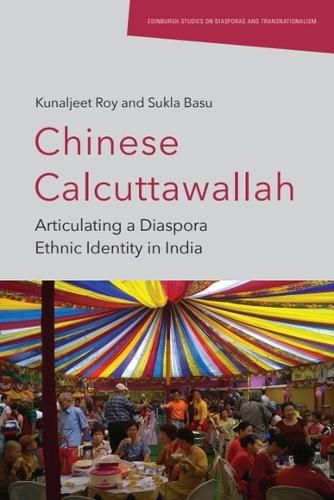Readings Newsletter
Become a Readings Member to make your shopping experience even easier.
Sign in or sign up for free!
You’re not far away from qualifying for FREE standard shipping within Australia
You’ve qualified for FREE standard shipping within Australia
The cart is loading…






By examining the everyday geographies of ethnic identity, place-making and cultural landscape transformations, as well as tracing the root of the Chinese community's origin through cartographic and archival records, this book depicts multi-cultural landscape formation in Kolkata (Calcutta). The authors capture how Kolkata's vibrant Chinese community has uniquely shaped the 'twin Chinatowns' amidst the city's diverse urban tapestry and gradually modified the adjacent cultural landscape towards a 'little China'. As these neighbourhoods encounter modern challenges of gentrification and global connectivity, the book explores the ways in which the community, particularly its youth, navigates the complexities of maintaining a transnational identity while being deeply rooted in the local cultural milieu. From the continuous ebb and flow of migration to the fostering of hybrid identities, this analysis examines how these transformations impact community cohesion and cultural heritage.
Featuring poignant individual case studies from Indian-Chinese respondents, the book examines issues such as identity, preservation efforts and the effects of socio-economic changes. Research techniques like adopting visual ethnographic 'streetscape' and cognitive 'emotional' cartography depict the everyday geography of the 'twin Chinatowns', illustrating how these communities claim their spaces and build connections on a global scale. Kunaljeet Roy and Sukla Basu reconnect with the essence of Kolkata's Chinese community and showcase how they navigate the challenges of a globalised world while holding onto the threads of heritage that define them as a 'Chinese Calcuttawallah'.
$9.00 standard shipping within Australia
FREE standard shipping within Australia for orders over $100.00
Express & International shipping calculated at checkout
By examining the everyday geographies of ethnic identity, place-making and cultural landscape transformations, as well as tracing the root of the Chinese community's origin through cartographic and archival records, this book depicts multi-cultural landscape formation in Kolkata (Calcutta). The authors capture how Kolkata's vibrant Chinese community has uniquely shaped the 'twin Chinatowns' amidst the city's diverse urban tapestry and gradually modified the adjacent cultural landscape towards a 'little China'. As these neighbourhoods encounter modern challenges of gentrification and global connectivity, the book explores the ways in which the community, particularly its youth, navigates the complexities of maintaining a transnational identity while being deeply rooted in the local cultural milieu. From the continuous ebb and flow of migration to the fostering of hybrid identities, this analysis examines how these transformations impact community cohesion and cultural heritage.
Featuring poignant individual case studies from Indian-Chinese respondents, the book examines issues such as identity, preservation efforts and the effects of socio-economic changes. Research techniques like adopting visual ethnographic 'streetscape' and cognitive 'emotional' cartography depict the everyday geography of the 'twin Chinatowns', illustrating how these communities claim their spaces and build connections on a global scale. Kunaljeet Roy and Sukla Basu reconnect with the essence of Kolkata's Chinese community and showcase how they navigate the challenges of a globalised world while holding onto the threads of heritage that define them as a 'Chinese Calcuttawallah'.